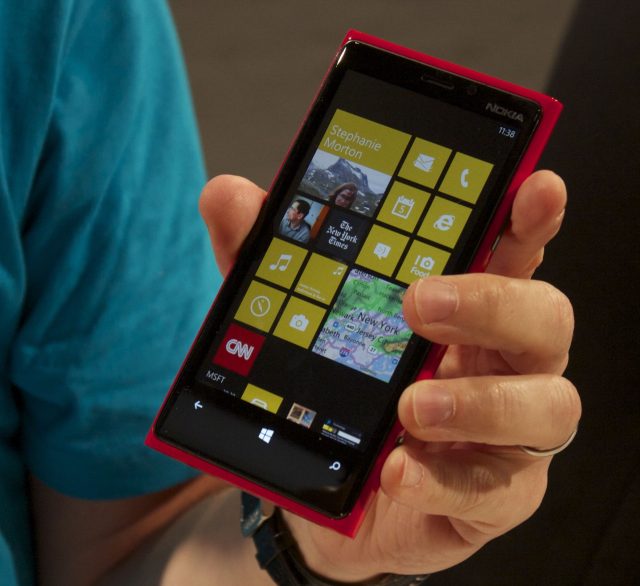Windows Phone users clinging on to their handsets might have to reshuffle their choice of phones following an announcement by Microsoft that its ‘killing’ down the brand. With the phone being a zombie that was just a matter of time before the world got an official statement from the company to admit the phone was ‘dead’.
During the weekend, Microsoft’s Joe Belfiore tweeted confirmation of something that has been suspected for many months: Microsoft is no longer developing new features or new hardware for Windows Mobile. Existing supported phones will receive bug fixes and security updates, but the platform is essentially now in maintenance mode.
Microsoft’s difficulties in the mobile market are no secret, but for a time the company looked as if it was keeping Windows Mobile as a going concern regardless. Through 2016, Microsoft produced new builds for the Windows Insider program and added new features to Windows Mobile.
At around the time of release of the Windows 10 Creators Update in April this year, that development largely ground to a halt. Windows Mobile, which already lacked certain features that were delivered to Windows on the PC, had its development forked. PC Windows development continued on the “Redstone 3” branch (which will culminate in the release of the Fall Creators Update later this month); Windows Mobile languished on a branch named “feature2.”
But in spite of this, until Belfiore’s tweets at the weekend, Microsoft never actually said what its plans for Windows Mobile were or how it would be developed going forward.
Answering another question on Twitter, Belfiore explained that Microsoft never got over the app incentive hurdle, with a user volume too low to justify the investment from app developers. In late 2017, with the platform all but extinct, that’s not tremendously surprising. Over the last year, sales of Windows Mobile devices collapsed. Two to three years ago, annual sales of Windows Phones numbered in the tens of millions; now, they’re close to zero.
An inauspicious start
What makes Microsoft’s position particularly disappointing, at least for this writer, is a continued sense that it didn’t have to be this way. In developing Windows Phone and Windows Mobile, Microsoft made a number of fumbles.
The company was too slow to grasp the importance of capacitive screens and finger-first user interfaces. Instead of seeing the iPhone and immediately starting development on Windows Phone, the company first tried to graft some basic finger-friendly interface features to the (old) Windows Mobile—an operating system that remained fundamentally stylus-oriented—with miniature replicas of mouse interfaces.
When Windows Phone 7 hit the market in 2010, it was clear that Redmond did, in fact, know how to put together a high-quality, finger-based user interface and build an operating system around that interface. This initial release held promise, but it was feature poor—it didn’t even have copy and paste at first, in a strange mirroring of the iPhone’s early feature deficits—and perhaps more fundamentally, Microsoft was sticking to its traditional business model of charging hardware companies for software licenses.
On one level, this decision was understandable, because it’s a model that had proven hugely successful for Windows and modestly successful for Windows Mobile in the pre-iPhone era. But on another level, it was clearly a mistake: the head-to-head competition in this market wasn’t iOS (because Apple doesn’t license iOS to third parties) but Google’s Android. And while there were (and are) licensing complexities around the Google Apps and Google Play Store, the core Android operating system was and is zero cost for hardware companies. Anyone can throw some parts into a phone-shaped box and slap Android onto it without paying Google a penny.
Microsoft then subjected users of this nascent platform to a painful transition. Windows Phone 7 was derived from the old Windows Mobile software. Windows Phone 8, released in late 2012, was not; it was a sibling to the desktop Windows operating system using the Windows NT kernel. Strategically, this was the right thing to do. Microsoft unified its Windows development using a common operating system kernel and, increasingly, developer APIs across phones, tablets, laptops, desktop PCs, servers, and even the Xbox and HoloLens.
But the move was not without pain. Windows Phone 7 devices couldn’t be upgraded to Windows Phone 8, leaving early adopters with phones that were prematurely end-of-lifed and a bad taste in their mouths. Moreover, the mere work of moving to the common kernel and APIs was such a huge undertaking that it didn’t give Microsoft much time to actually work on features and capabilities. Windows Phone 7 had a feature deficit relative to Android and iOS, and Windows Phone 8, rather than closing this feature deficit, was instead focused on updating and replacing the operating system’s core.
A company that had more immediately recognized both the threat and the opportunity the iPhone represented, as well as the business transformation that Android made inevitable, might well have avoided these problems. Quicker adoption of true touch interfaces, a decision to use a common NT kernel platform from the outset, a move to a store-based revenue model rather than operating system licensing; in hindsight, Microsoft could have made better decisions and made them sooner. Doing so might well have made Windows Phone a more successful platform.
Green shoots of success
In spite of all of this, there was some cause for optimism. The first generation of Windows Phone 8 handsets from Nokia were well received. Nokia had a good selection of phones from the flagship Lumia 920 down to the cheap and cheerful Lumia 520. Strong cameras became something of a Lumia trademark, and Windows Phone-specific design elements—such as a dedicated camera button with half-press autofocus—provided thoughtful differentiation. The enormous Windows Phone 8.1 update added a range of useful features, including a best-in-class swipe-based keyboard.

As much as the platform had struggled since its 2010 launch, the wave of 2012 and 2013 hardware and software releases appeared to put it on a surer footing. At the low end, devices like the Lumia 520 offered a true smartphone experience that Android struggled to match. Comparably priced Android hardware wasn’t as good: the software felt slower; the hardware felt less carefully constructed. And at the high end, the attractive software and high-end cameras were enough to pique interest. Per Kantar Worldpanel, Windows Phone hit a 12-percent market share in the UK in August 2013; 12.9 percent in France in November 2013; 17.1 percent in Italy in December 2013; 10.5 percent in Germany even as late as August 2015. The domestic story was never as good; Windows Phone barely cracked 5 percent in the US, which for an American company was always awkward.
These numbers still left Windows Phone in third place (or, occasionally, second place in markets with particularly weak iPhone penetration). But the trajectory was upwards, with a platform and product mix that was suitable for a wide range of audiences. In September 2013, Microsoft announced plans to buy Nokia’s phone business in a deal that cost $7.1 billion and wouldn’t close until April 2014. The future felt promising: keep the same product mix, keep making the platform better, and Windows Phone looked well positioned to, at the very least, stake out a solid third place and perhaps make a challenge for second place.












Comments